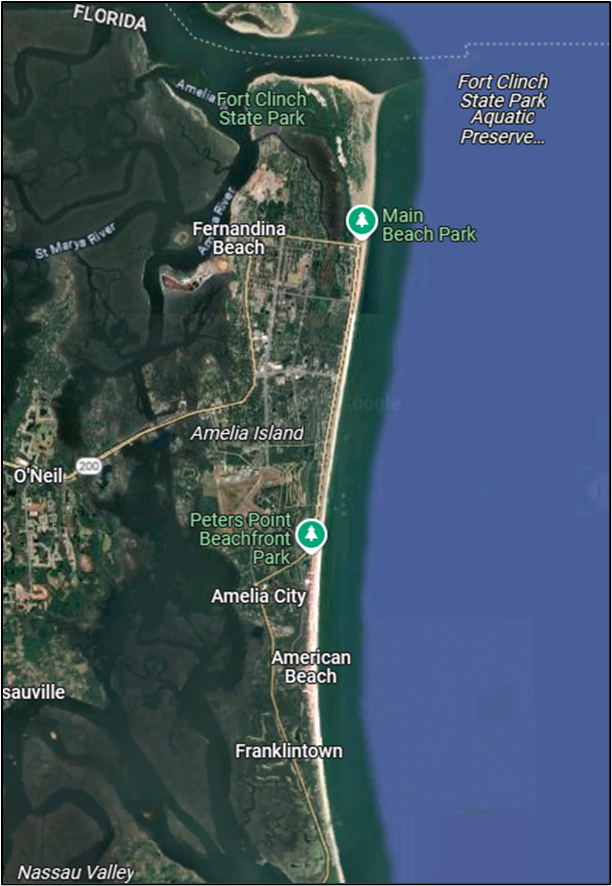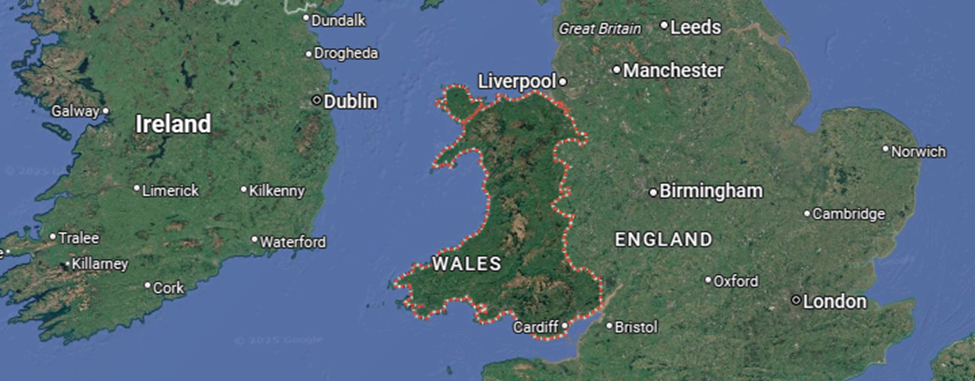- Courses
- GS Full Course 1 Year
- GS Full Course 2 Year
- GS Full Course 3 Year
- GS Full Course Till Selection
- Answer Alpha: Mains 2025 Mentorship
- MEP (Mains Enrichment Programme) Data, Facts
- Essay Target – 150+ Marks
- Online Program
- GS Recorded Course
- Polity
- Geography
- Economy
- Ancient, Medieval and Art & Culture AMAC
- Modern India, Post Independence & World History
- Environment
- Governance
- Science & Technology
- International Relations and Internal Security
- Disaster Management
- Ethics
- NCERT Current Affairs
- Indian Society and Social Issue
- NCERT- Science and Technology
- NCERT - Geography
- NCERT - Ancient History
- NCERT- World History
- NCERT Modern History
- CSAT
- 5 LAYERED ARJUNA Mentorship
- Public Administration Optional
- ABOUT US
- OUR TOPPERS
- TEST SERIES
- FREE STUDY MATERIAL
- VIDEOS
- CONTACT US
PLACES IN NEWS 21st June 2025
PLACES IN NEWS 21st June 2025

1. Amelia Island (Florida, USA)

Why in the News?
- Amelia Island is famous for its natural beauty and peaceful surroundings today.
- However, the island also has a deep and important history.
- It was one of the first places in Florida where Black families were told they were free.
- After gaining freedom, these families started building strong and meaningful communities.
- Their efforts laid the foundation for a powerful cultural and historical legacy on the island.
What are the Key Highlights?
- Location:
- Amelia Island is in Nassau County, Florida, near the Florida-Georgia border.
- It lies along the Atlantic Ocean and is part of the Sea Islands chain.
- Physical Geography:
- Amelia Island is a barrier island, which helps protect the mainland during storms.
- It is about 13 miles (21 km) long and 4 miles (6.4 km) wide at its widest point.
- On the east side, it touches the Atlantic Ocean, and on the west side, it is bordered by the Amelia River and the Intracoastal Waterway.
- The island has sandy beaches, dunes, salt marshes, and tidal creeks.
- The land is low-lying, making it prone to flooding and storm surges.
- Climate:
- The island has a humid subtropical climate.
- It experiences hot summers and mild winters.
- It receives heavy rainfall, especially during the hurricane season from June to November.
- Ecological Importance:
- Amelia Island is part of the Sea Islands coastal ecosystem, which supports a variety of plants and animals.
- It has maritime forests, wetlands, and coastal dunes.
- It is a critical habitat for migratory birds and marine animals like sea turtles.
- The island is facing threats from urban development and climate change.
- Historical and Cultural Geography:
- The island is known for its African-American heritage, especially after the Civil War.
- It was one of the first places where freed Black families received land and rights.
- Amelia Island was once controlled by eight different countries, including Spain, France, and Britain.
- Today, tourism and heritage conservation are major sources of income.
- Strategic Significance:
- The island has served as a naval defense point because of its position near the St. Marys River.
- It is located close to the Naval Submarine Base Kings Bay in Georgia, which gives it strategic military importance.
What are the Challenges and Way Forward?
|
Challenges |
Way Forward |
|
Rising sea levels and stronger storms |
Build stronger coastal protection like dunes and sea walls |
|
Biodiversity loss due to urban development |
Protect forests, wetlands, and control new construction |
|
Risk to historical and cultural heritage |
Promote heritage tourism and protect important historical sites |
|
Overcrowding and strain on natural resources due to tourism |
Encourage sustainable and eco-friendly tourism practices |
|
Impact of climate change on birds and marine life |
Increase public awareness and support scientific research |
Conclusion
Amelia Island is a place where nature, history, and culture come together. It plays an important role in protecting wildlife and preserving African-American heritage. With proper care and planning, the island can be protected for future generations while supporting local communities and the environment.
2. Wales

Why in the News?
- Wales has been in the news due to a severe heatwave. Experts have warned that this could be a "silent killer", especially for older people.
- The heatwave is caused by climate change, and it is affecting the health of people and the environment in Wales.
What are the Key Highlights?
- Wales is a part of the United Kingdom.
- It is located in the west of Great Britain.
- It shares a border with England and is surrounded by the Irish Sea and the Bristol Channel.
- The land in Wales is mostly mountainous.
- Mount Snowdon is the highest mountain.
- The north and central parts have more mountains, while the south has more flat areas.
- The Cambrian Mountains are also in central Wales and are the source of many rivers.
- In the south, the land is more flat. The Brecon Beacons, now called Bannau Brycheiniog, are a mountain range in South Wales.
- Wales has many important physical features.
- It has rivers, mountains, and a long coast with beaches and cliffs.
- River Severn starts in Wales and is the longest river in Britain.
- The climate is mild but very rainy.
- It rains more in the mountains and the western side.
- The east is a little drier.
- Natural resources of Wales are coal, slate, wind, and water.
- Coal was very important in the past.
- Today, wind and water are used to produce clean energy.
- There are three national parks.
- Snowdonia
- Bannau Brycheiniog (earlier Brecon Beacons),
- Pembrokeshire Coast.
- These places are known for their beauty and wildlife.
- Cardiff is the capital city.
- Most people live in the south of Wales.
- The Welsh language is still used, especially in the north and west.
What is the Significance?
- Wales is an important part of the UK because of its natural resources, culture, and beautiful landscapes.
- It is popular for tourism, hiking, and coastal trips.
- Wales is helping in the fight against climate change by using renewable energy like wind and water power.
- It also shows how small places with mountains and coastlines can be deeply affected by climate problems, like heat waves and floods.
What are the Challenges and Way Forward?
|
No. |
Challenges |
Way Forward |
|
1. |
Climate change is causing heat waves and weather problems. |
Increase use of renewable energy and improve climate warning systems. |
|
2. |
Rural and mountain areas may lack good transport and services. |
Build better roads, buses, and digital access in such areas. |
|
3. |
The Welsh language is at risk of being lost. |
Promote the Welsh language in schools and public signs. |
|
4. |
Old coal areas now have fewer jobs. |
Develop new industries like green energy and eco-tourism. |
|
5. |
Heavy rainfall can cause floods in valleys and lowlands. |
Improve drainage systems and protect natural areas like wetlands. |
Conclusion
Wales is a small but beautiful country with mountains, rivers, and a long coast. It has rich natural resources and a deep cultural heritage. Today, it faces new challenges from climate change and economic change. With better planning and care for nature, Wales can protect its people and remain a green and healthy part of the world.



